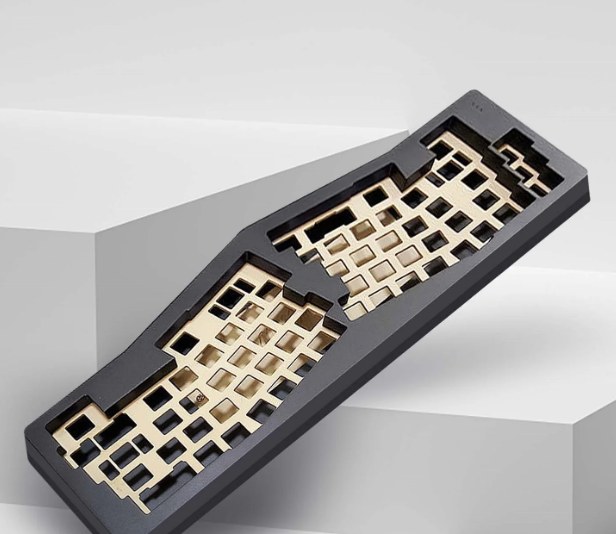A CNC mechanical keyboard is a type of computer keyboard that utilizes individual mechanical switches for each key, as opposed to the rubber dome switches that are used in the majority of mainstream keyboards. These switches can be found on a standard computer keyboard. The process of creating the switches and components of the keyboard that is referred to as “CNC” (which stands for “computer numerical control”) is a precise manufacturing process. Durability, tactile feedback, and the ability to be customized are distinguishing characteristics of CNC mechanical keyboards.

Why Should the CNC Mechanical Keyboard Use All-Aluminum CNC Anodizing
Using all-aluminum CNC anodizing for a CNC mechanical keyboard can offer several benefits:
-Durability: The aluminum is given a surface that is hard and resistant to wear through the process of anodizing, which helps to protect the keyboard from scuffs and other forms of damage.
-Corrosion resistance: An additional benefit of anodizing is the addition of a layer of protection against oxidation and corrosion, both of which can shorten the lifespan of the keyboard.
-Aesthetics: Anodizing is a process that can be used to impart color and various finishes onto aluminum, giving it a look that is both distinctive and visually appealing.
-Thermal conductivity: Anodizing can improve the thermal properties of aluminum, which makes the keyboard more comfortable to use for extended periods of time. Aluminum is a good conductor of heat, and anodizing can improve its thermal properties.
An all-aluminum CNC anodizing process, when applied to a CNC mechanical keyboard, can improve not only its performance but also its appearance and its longevity.
What Are the Processes of CNC Machining Aluminum Alloy Mechanical Keyboard Shell
The processing processes of CNC machining an aluminum alloy mechanical keyboard shell can include:
Step 1 – Design
The first thing that needs to be done is to use CAD software to come up with a 3D design of the keyboard shell.
Step 2 – Material Selection
The proper aluminum alloy material is chosen for the project based on the properties that are desired, such as the amount of weight and the amount of strength.
Step 3 – CNC Milling
CNC milling is the process that is used to create the keyboard shell. This process involves cutting and shaping the material using machinery that is controlled by a computer.
Step 4 – Anodizing
Anodizing is a process that can be utilized to add a layer to the aluminum casing that is both protective and decorative in nature. In this process, the keyboard shell is submerged in an acid bath, and then an electric current is passed over it. This produces a surface that is hard and resistant to wear and tear.
Step 5 – Finishing
Additional finishing processes, such as polishing or sandblasting, may be applied to the keyboard shell in order to improve both its appearance and its feel.
Step 6 – Assembly
The final step is to assemble the keyboard, which may involve attaching the switches, keycaps, and other components to the aluminum shell. This step must be completed before moving on to the next step.
Overall, CNC machining an aluminum alloy mechanical keyboard shell involves several steps, including design, material selection, CNC milling, anodizing, finishing, and assembly, to create a high-quality, durable, and aesthetically pleasing product.
When Customizing the Keyboard Shell, How To Choose Aluminum Alloy CNC Processing
When customizing a keyboard shell using aluminum alloy CNC processing, there are several factors to consider, including:
-Material selection: There are many different types of aluminum alloys, each of which possesses a unique combination of characteristics, including weight, resistance to corrosion, and strength. It is imperative that the appropriate aluminum alloy be chosen for the keyboard in consideration of its particular requirements, such as long-term reliability and aesthetic appeal.
-CNC capabilities: It is important to take into account the CNC machining capabilities of the manufacturer, including the maximum size and shape of the parts that can be produced, the level of precision of the cuts, and the capabilities of the finishing equipment.
-Design requirements: It is important to carefully consider the design of the keyboard shell, including the degree of difficulty of the geometry, the number of pieces required, and the requirements for the finishing.
-Surface finish: Consideration should also be given to the surface finish that is desired for the keyboard shell. For example, one must decide whether the shell should be anodized, painted, or allowed to retain its natural finish.
Overall, when choosing aluminum alloy CNC processing for a customized keyboard shell, it is important to consider the material, CNC capabilities, design requirements, and surface finish to ensure a high-quality and aesthetically pleasing product.